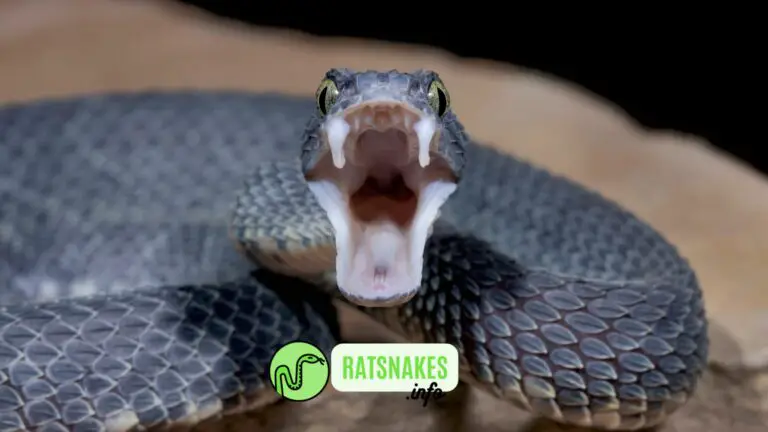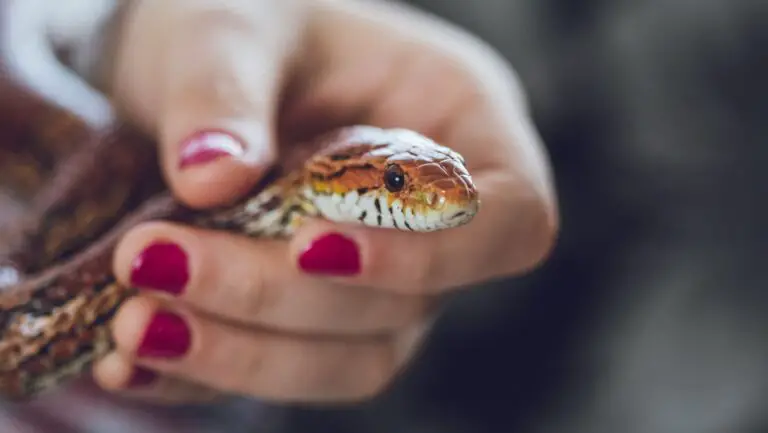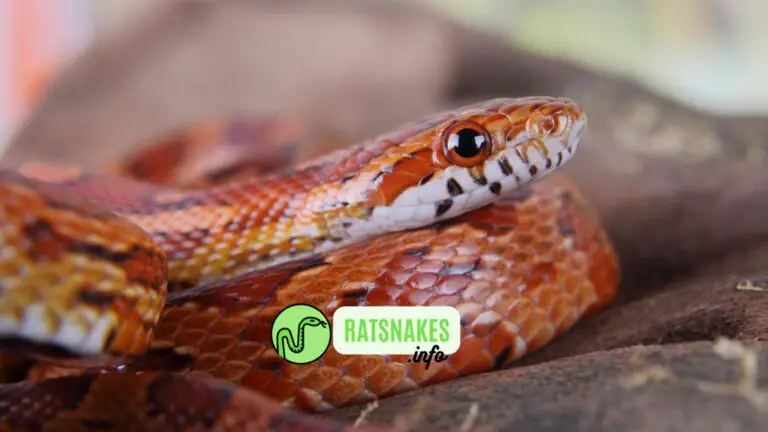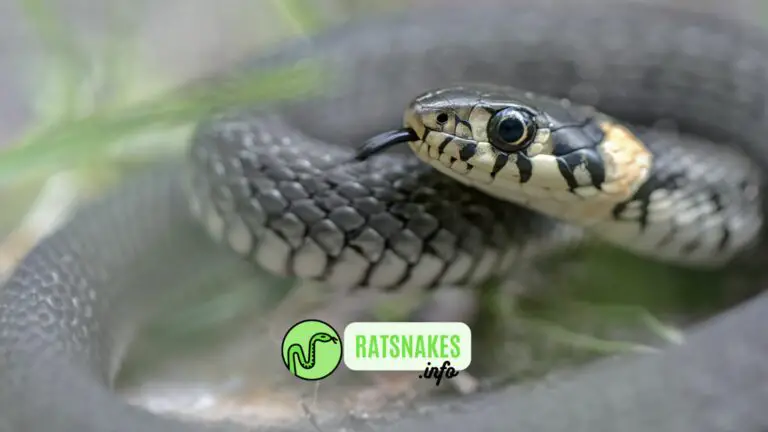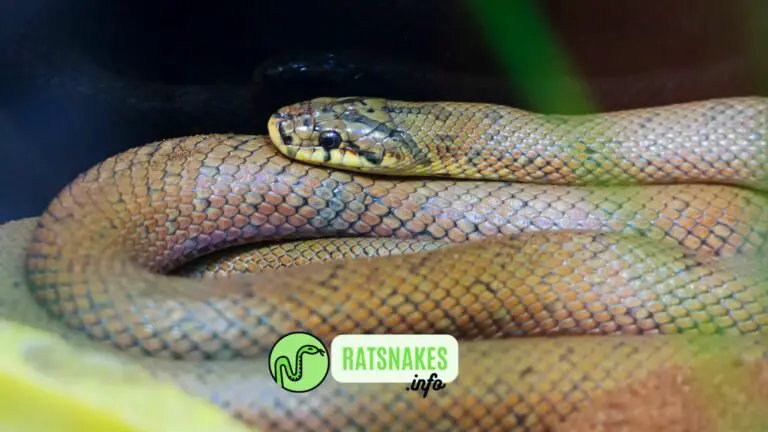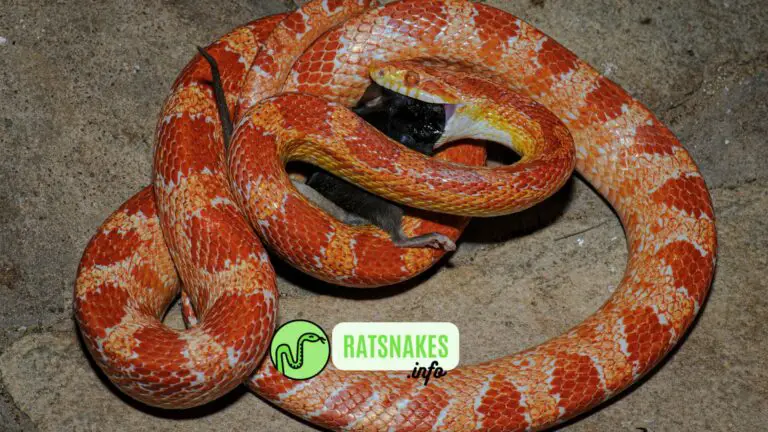![Prey of Ratsnakes in the Wild [Full List]](https://ratsnakes.info/wp-content/uploads/2022/11/Prey-of-Ratsnakes.jpg)
Ratsnakes are a group of non-venomous constrictor snakes that are widely distributed around the world. They are known for their adaptability and diverse diet. In the wild, ratsnakes feed on a variety of prey items, which may vary depending on their geographic location, habitat, and species. In this article, we will explore the common prey of ratsnakes in their natural habitats.
Ratsnakes are non-venomous constrictor snakes found in various parts of the world. They are known for their adaptability and wide-ranging diet. In this overview, we will explore the prey of ratsnakes in their natural habitats, discussing the types of animals they hunt and consume as a vital part of their diet.
I. General Feeding Behavior:
- Constrictor Snakes: Ratsnakes are constrictors, meaning they subdue and kill their prey by coiling their bodies around them and squeezing until the prey cannot breathe.
- Opportunistic Feeders: Ratsnakes are opportunistic predators, capable of consuming a variety of prey items based on availability and suitability.
II. Common Prey of Ratsnakes:
- Rodents: Ratsnakes have a strong affinity for rodents and are known to prey on mice, rats, voles, and other small mammal species.
- Birds: Birds, including nestlings and small avian species, are also targeted by ratsnakes, especially when they encounter nests or roosting sites.
- Eggs: Ratsnakes are skilled egg predators and can consume the eggs of various bird species, reptiles, and amphibians.
- Amphibians: Amphibians, such as frogs, toads, and salamanders, form an essential part of the diet of many ratsnake species.
- Lizards: Ratsnakes may prey upon small lizard species, including geckos, skinks, and other similar reptiles.
- Invertebrates: Insects, spiders, and other invertebrates can also be targeted by ratsnakes, particularly when other prey items are scarce.
III. Size Considerations:
- Prey Size Relation: The size of the prey consumed by ratsnakes is often dependent on the snake’s own size and capabilities. Younger snakes tend to feed on smaller prey items, while larger adults can consume larger prey.
- Prey Overpowering: Ratsnakes have the ability to stretch their jaws widely, allowing them to swallow prey items that may seem relatively large compared to their own head size.
IV. Ecological Importance:
- Pest Control: Ratsnakes play a crucial role in controlling populations of rodents and other potential pests, helping maintain ecological balance in their habitats.
- Prey-Predator Interactions: The predation of ratsnakes on various prey species contributes to the natural dynamics of food webs and influences population dynamics of both predators and prey.
Prey Options for Ratsnakes in Captivity:
- Mice and Rats: One of the most common prey items for captive ratsnakes are appropriately sized mice and rats. The size of the prey should be proportional to the snake’s body size and age.
- Quail and Chicks: For larger ratsnake species, young quails or chicks can be offered as a suitable prey option. These provide a more substantial meal for larger snakes.
- Gerbils and Hamsters: Some owners may choose to offer gerbils or hamsters as occasional prey items, although these should be used sparingly and as part of a varied diet.
- Frozen/Thawed Prey: Many owners prefer to feed ratsnakes with frozen/thawed prey items purchased from reputable suppliers. This ensures safety and eliminates the risk associated with live prey.
- Nutritional Variety: It is essential to provide a varied diet to ratsnakes to mimic their natural feeding habits. This can include rotating between different prey items such as mice, rats, quail, and chicks.
Feeding Considerations:
- Size Appropriateness: The size of the prey item should be appropriate for the snake’s age and size. Offering prey that is too large can lead to regurgitation or digestive issues, while prey that is too small may not provide sufficient nutrition.
- Feeding Frequency: Younger ratsnakes generally require more frequent feedings (every 5-7 days), while adults may be fed less frequently (every 7-10 days) to maintain their optimal body condition.
- Monitoring and Observation: It is crucial to observe the feeding behavior of captive ratsnakes to ensure they consume their prey fully and without any complications. If any issues arise, such as regurgitation or refusal to eat, it may be necessary to seek veterinary advice.
Conclusion:
Ratsnakes are versatile predators with a wide-ranging diet that includes rodents, birds, eggs, amphibians, lizards, and invertebrates. Their ability to adapt to various prey items makes them successful predators in their respective habitats. By preying on pests and participating in the natural food web, ratsnakes contribute to the ecological balance and maintain healthy ecosystems. Understanding the prey of ratsnakes provides insights into their feeding behavior and their role as important components of their ecosystems.
Table of Rat Snakes Diet In Wild
Mc – Mice, Rt – Ratsn, Bd – Birds, BE – Birds Eggs, Liz – Lizards, Fr – Frogs, Fs – Fish, Sn – Snakes, Sq – Squirrels, Mo – Moles & Shrews, Bt – Bats, In – Insects, Ws – Weasels, RE – Reptile Eggs, Rb – Rabbits & Hares
|
Mc |
Rt |
Bd |
BE |
Liz |
Fr |
Fs |
Sn |
Sq |
Mo |
Bt |
In |
Ws |
RE |
Rb |
|
| Bogertophis rosalie |
X |
X |
X |
|
X |
|
|
|
|
|
X |
|
|
|
|
|
Bogertophis subocularis |
X |
X |
X |
|
X |
|
|
|
|
|
X |
|
|
|
|
|
Coelognathus erythrurus |
X |
X |
|
|
X |
X |
|
|
X |
X |
|
|
|
|
|
|
Coelognathus flavolineatus |
X |
X |
X |
|
X |
X |
|
|
X |
|
X |
|
|
|
|
|
Coelognathus helena |
X |
X |
X |
|
X |
X |
|
X |
X |
|
|
X |
|
|
|
|
Coelognathus radiatus |
X |
X |
X |
|
X |
X |
|
|
X |
|
X |
|
|
|
|
|
Coelognathus subradiatus |
X |
X |
X |
|
X |
|
|
|
|
|
X |
|
|
|
|
|
Elaphe bimaculata |
X |
X |
X |
X |
X |
|
|
|
|
|
|
|
|
|
|
|
Elaphe carinata |
X |
X |
X |
X |
X |
X |
|
X |
|
|
|
|
|
X |
|
|
Elaphe climacophora |
X |
X |
X |
X |
X |
X |
|
X |
X |
|
|
|
|
|
|
| Elaphe davidi |
X |
X |
X |
X |
X |
|
|
X |
|
|
|
|
|
|
|
| Elaphe dione |
X |
X |
X |
X |
X |
X |
|
X |
|
X |
|
X |
|
|
|
| Elaphe quadrivirgata |
X |
X |
X |
X |
X |
X |
|
X |
X |
|
|
|
|
X |
|
| Elaphe quatuorlineata |
X |
X |
X |
X |
X |
|
|
X |
|
|
|
X |
|
|
X |
| Elaphe schrencki |
X |
X |
X |
X |
|
|
|
|
|
|
X |
|
|
|
|
| Euprepiophis conspicillatus |
X |
X |
X |
|
X |
X |
|
|
|
X |
|
|
|
|
|
| Euprepiophis mandarinus |
X |
X |
|
|
|
|
|
|
|
X |
|
|
|
|
|
| Gonyomsoma frenatum |
X |
X |
X |
|
X |
|
|
|
|
|
|
|
|
|
|
| Gonyomsoma janseni |
X |
X |
X |
|
|
|
|
|
X |
|
X |
|
|
|
|
| Gonyomsoma oxycephalum |
X |
X |
X |
|
X |
|
|
|
X |
|
X |
|
|
|
|
| Gonyomsoma prasinum |
X |
X |
|
|
X |
|
|
|
|
|
|
|
|
|
|
| Oreophis porphyraceus |
X |
X |
|
|
|
|
|
|
|
X |
|
|
|
|
|
| Orthriophis cantoris |
X |
X |
|
|
|
|
|
|
|
|
|
|
|
|
|
| Orthriophis hodgsoni |
X |
X |
X |
|
|
|
|
|
|
|
|
|
|
|
|
| Orthriophis moellendorfi |
X |
X |
|
|
|
|
|
|
|
|
X |
|
|
|
|
| Orthriophis taeniurus |
X |
X |
X |
X |
X |
X |
|
|
X |
|
X |
|
|
|
|
| Pantherophis bairdi |
X |
X |
X |
X |
X |
|
|
|
|
|
X |
|
|
|
|
| Pantherophis gutattus |
X |
X |
X |
X |
X |
X |
|
|
X |
X |
X |
X |
|
|
|
| Pantherophis obseletus |
X |
X |
X |
X |
X |
X |
|
X |
X |
X |
X |
X |
X |
X |
X |
| Pantherophis vulpinus |
X |
X |
X |
X |
X |
X |
|
X |
X |
|
X |
X |
|
|
X |
| Rhinechis scalaris |
X |
X |
X |
X |
X |
|
|
|
X |
X |
|
X |
|
X |
X |
| Zamenis hohenackeri |
X |
X |
|
|
X |
|
|
|
|
|
|
X |
|
|
|
| Zamenis longissmus |
X |
X |
X |
X |
X |
X |
|
|
X |
X |
X |
X |
X |
|
|
| Zamenis persicus |
X |
X |
X |
|
X |
|
|
|
|
|
|
|
|
|
|
| Zamenis situla |
X |
X |
X |
|
X |
|
|
|
|
X |
|
X |
|
|
|

